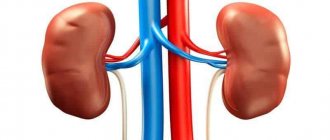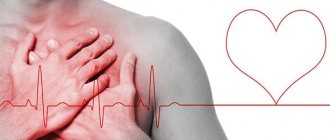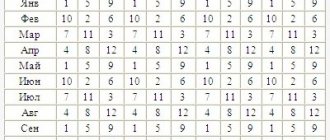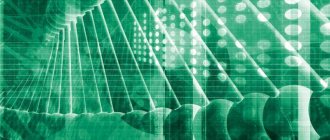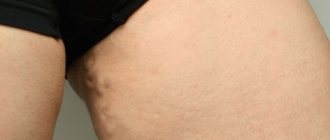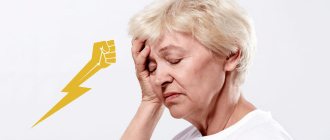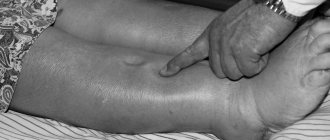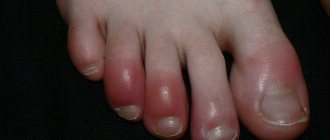Symptoms
With vegetative-vascular dystonia, men experience symptoms of diseases of the digestive, nervous and cardiovascular systems. Patients often complain of:
- heartbeat;
- shortness of breath;
- tingling or burning in the heart area;
- bloating;
- diarrhea;
- tendency to constipation;
- feeling of incomplete bowel movement.
Symptoms of vegetative-vascular dystonia in men are combined with increased anxiety and restlessness.
Symptoms of vegetative-vascular dystonia
Vegetative vascular dystonia: main symptoms and treatment of the disease
If you are worried about vegetative vascular dystonia, the symptoms of the disease are similar to the signs of somatic organic disorders in the body. To distinguish it from other diseases, you need to learn more about the disease.
Vegetative vascular dystonia syndrome (or neurocirculatory dysfunction) refers to painful processes in the autonomic nerve system, leading to a deficiency of oxygen supply to tissues and cells.
Medical statistics say that various variations in the signs of vegetative-vascular dystonia are observed in 80% of the population of different age categories.
Headache
In men, VSD with headaches mimics the symptoms of migraine, hypertension, and cluster pain. If you have a recurring headache, you need to undergo a full examination of the brain and blood vessels to rule out life-threatening diseases.
The head may hurt due to aneurysm of cerebral vessels or atherosclerotic damage to the arteries, tumors, and inflammatory processes. If cephalgia is one of the signs of vegetative-vascular dystonia in a man, therapy may be limited to lifestyle adjustments and sedatives.
First aid for an attack of VSD
To provide first aid to a patient, it is not enough to be able to support and empathize. To provide adequate assistance, you need to know what type of crisis a person is experiencing. Incorrectly provided assistance can only make the situation worse.
There are three types of seizures:
- Hypertensive. It affects the sympathetic nervous system. This type is characterized by rapid heartbeat and increased blood pressure. Too much adrenaline enters the bloodstream, causing the body to think that it is in danger and thereby prepare for an attack.
- Hypotonic. With this type, the parasympathetic part of the central nervous system is involved. Blood pressure drops, pulse becomes rare. Glucose in the blood is converted into glycogen, which leads to relaxation and lethargy.
Mixed. This type is extremely rare. There is no general clinical picture.
If a patient has developed a hypertensive (sympathoadrenaline) crisis, then you need to:
- create a calm environment;
- seat the person on a chair and provide a flow of fresh air;
- remove tight clothes;
- wash your face with cold water;
- prepare hot tea;
- give an infusion of valerian or motherwort to drink.
Calm and deep breathing will also help you relax. If there is a sharp jump in blood pressure, you can give the person to drink “Capoten” or “Anaprilin”. If these rules are followed, the attack will pass in 30-40 minutes.
It has been noted that vegetative-vascular crises most often occur in the afternoon
With the development of a hypotonic (vagoinsular) crisis, the action algorithm is as follows:
- sit the person on a chair;
- prepare sweet and strong tea;
- provide a flow of fresh air;
- Make sure that the person does not make sudden movements.
For severe headaches, the Citramon tablet will help. If you faint, place the patient on the sofa and place a cushion or pillow under the ankles. If a person does lose consciousness, then ammonia or vinegar will help bring him back to reality. Soak a cotton pad in the liquid and bring it to the patient's nostrils.
What treatment is possible?
The objectives of treating vegetative-vascular dystonia in men include the following steps:
- normalization of physical activity;
- nutrition correction;
- normalization of sleep;
- eliminating anxiety.
Patients are recommended to consult with a psychotherapist to identify and eliminate the causes of anxiety.
Reduced stress levels
Complex treatment of vegetative-vascular dystonia in men includes reducing stress factors. They recommend taking a vacation and changing your surroundings. If internal restlessness and feelings of anxiety cause frequent exacerbations, weak sedatives are prescribed.
Daily physical activity
Sports, jogging, swimming improve overall well-being, normalize the regulation of vascular tone, and have a beneficial effect on the functioning of the autonomic nervous system. In addition, muscle load increases the body's resistance to stress factors.
The need for comprehensive diagnostics
If symptoms of VSD occur in adult men, exclude diseases of the heart and blood vessels, endocrine and digestive systems:
- hypothyroidism;
- chronic viral infections;
- arterial hypertension;
- atherosclerosis;
- hepatitis;
- pancreatitis.
The signs that patients complain about may hide diabetes mellitus, iron deficiency anemia, cancer, and systemic pathologies.
Types of exacerbations of VSD, symptoms
Dysfunction of the internal systems of the body can be observed year-round after childbirth or during pregnancy, after prolonged use of alcoholic beverages, under stress, even after a hard day at work. Exacerbation of vegetative-vascular dystonia is divided into several types, let's get acquainted with them in more detail. Read about radiation for oncology on our website.
Table No. 2. Classification of exacerbations of VSD according to the provoking factor
| Name of exacerbation | Brief description, symptoms |
Summer exacerbation | At first glance, this should not happen at all, but heat, suffocation, and the permanent desire to hide somewhere and enjoy the coolness play a very important role in this case. The human body suffers from a lack of moisture, the patient suffers from severe migraines and dizziness, he does not want to eat a balanced diet. In some cases, fainting occurs. The patient loses weight, and with it vital energy. |
Spring | During this period, nature awakens, and in humans, in turn, subconscious reflexes awaken. If the body is in order, then they will not cause any harm, but in case of mental disorders or a weakened immune system, a feeling of fear, panic attacks, migraines, surges in blood pressure, and fever may appear. The patient may also suffer from general weakness, and his ability to work worsens. |
Autumn exacerbation | The body is in conflict with the surrounding reality, nature slowly falls asleep, and everything around speaks of fatigue and sadness. The patient is depressed and often has thoughts of death. The environment is so sad that internal systems malfunction, depression, headaches, digestive disorders appear, limbs go numb, and the skin becomes pale. And this is not a complete list of symptoms of exacerbation. |
Winter exacerbation | It is dark and cold outside; various diseases make themselves felt, leading to long-term treatment or even death. A person is surrounded by the energy of aging, which leads to panic and despondency. The temperature rises, disruptions in the heart function appear, and breathing becomes more and more difficult. |
Aggravation under stress | In an overexcited body, the functioning of all systems occurs at the limit of their capabilities; at the subconscious level, defense mechanisms are activated, leading to a lack of positive emotions and depression. The patient cannot cope with all the problems and simply goes into oblivion. |
During pregnancy, during the postpartum period | The new life born in the female body causes fear of childbirth and numerous worries about the health of the unborn baby. And this, in turn, causes severe depression, apathy, sleep disturbances, seizures and headaches. |
Exacerbation after drinking alcohol | This phenomenon occurs frequently and is popularly known as a hangover. Negative thoughts come to mind, the person suffers from attacks of suffocation and severe headaches. |
During menstruation | Critical days in most cases are accompanied not only by bleeding, but also by anxiety, fatigue, a feeling of heaviness in the stomach, migraines and exhaustion. A woman may not leave the house during the entire period of menstruation and simply lie in bed. |
As a result, we note that in order to overcome all the symptoms listed above, as well as to become truly happy, you need to believe in your own strength, be sure to set yourself up only for the good and look confidently into the future.
Symptoms of VSD
Vegetative-vascular dystonia in other groups of patients
Symptoms of VSD do not only appear in men. More often, women who are more prone to emotional instability turn to doctors.
In childhood
The causes of dysregulation of the autonomic nervous system are hereditary. Psychotraumatic factors provoke an increase in symptoms. The causes of attacks can be:
- sudden climate change;
- unbalanced diet;
- passion for computer games.
After ruling out somatic pathologies, the doctor prescribes a consultation with a child psychologist and physiotherapeutic procedures.
Excessive passion for computer games can cause an attack of VSD
Among women
In women, symptoms of VSD arise against the background of an inability to deal with stress. Changes in hormonal levels in patients with increased anxiety provoke attacks of panic attacks. Therapy in such cases consists of a radical change in lifestyle, eliminating bad habits, and working with a psychologist.
VSD in childhood
Particular attention must be paid to vegetative vascular dystonia that develops in children and adolescents. Signals appear mainly in early childhood. These children are more susceptible to illness, are often capricious, do not cope well with any type of stress (physical, intellectual, emotional), and they often experience mood swings.
Manifestations of VSD in adolescents cannot be attributed to adolescence and should not be left to chance.
If a teenager experiences emotional instability, excessive sweating, bouts of paleness or redness, pressure surges and bouts of fever, then doctors attribute these signs to vegetative vascular dystonia. It is strongly recommended to take prompt measures to eliminate these violations.
Classification of VSD and characteristic signs
Modern traditional medicine identifies several types of VSD, and each has its own symptoms.
- The tachycardial form is characterized by a gradual increase in pulse, which can reach 140-160 beats, blood pressure rises, and a sensation of pulsation occurs in the temples and blood vessels.
- The hypertensive type, in which short-term jumps in blood pressure are observed, the main difference from hypertension is that the blood pressure level does not exceed 170 over 95.
- Cardiological form, it is characterized by intense, prolonged pain in the area of the heart, mental anxiety, increased heart rate and blood pressure. The symptoms do not respond to angina medications.
- Hypotonic form: decreased blood pressure for a short period of time, general weakness, decreased body temperature, increased sweating.
- Visceral variety, characterized by intense abdominal pain, disruption of the digestive system: bloating, colic.
- The asthenic type manifests itself through severe prolonged fatigue, malaise, hand tremors and increased body temperature.
- The respiratory type is characterized by chest pain and difficulty breathing. People with this form are unable to take deep breaths.
Note! To determine the form of VSD, it is necessary to undergo a series of diagnostic studies.
Many experts identify a special form - mixed. It is characterized by a combination of all or several types of VSD. With any type of dystonia, attacks and exacerbations of the disease may occur, depending on certain factors.
